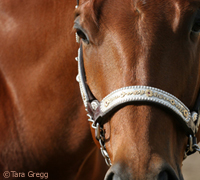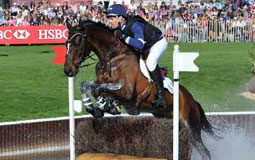 Whether a horse’s whorl (the hair that swirls on his forehead) swirls clockwise or counterclockwise can tell you whether he is right- or left-hoofed, according to a November 24 article published in Nature News.
Whether a horse’s whorl (the hair that swirls on his forehead) swirls clockwise or counterclockwise can tell you whether he is right- or left-hoofed, according to a November 24 article published in Nature News.
The article makes the point that which direction a horse favors could help trainers produce stock that runs straighter and wins more races. “That is a strong enough link to be a useful tip to trainers,” Murphy told Nature News. “A horse’s handedness or ‘motor laterality’ translates into a tendency to drift in one direction, which can make a big difference to a horse’s competitive chances. The earlier you can spot biases, the easier it is to correct them, by, for example, getting horses to work on their weaker side using longeing.”






Very interesting… I never thought about your horse being left hoofed or right hoofed!
Wow,that is really cool!
That’s really interesting! I had never thought about a horse being left or right hoofed either. 😛
Well, my first horse was left sided and it took me awhile to figure out why I had to do everything backwards from what the books said. I never knew about the whorls though. I think my current horse is right sided but I’ll check to see if this method works. It’s pretty easy to tell though so I don’t know why this method would be needed.
This is really interesting and I found a whole series of videos by Chris Irwin on the subject at http://www.horsevideolibrary.com!
I have six horses-three quarters and three paints. The whorls comments held up with my horses. That is,if the wholes are between the eyes, the calmer the horse–the higher the wholes the more high strung. Also, there are whorls on each side of the horses neck–the closer to the ears, the quieter the horse and the one closest to the ear is the softest side